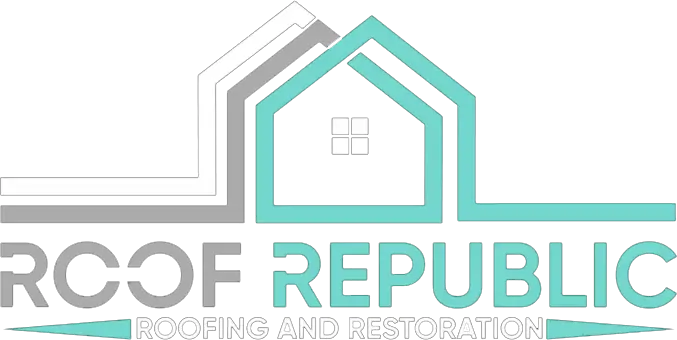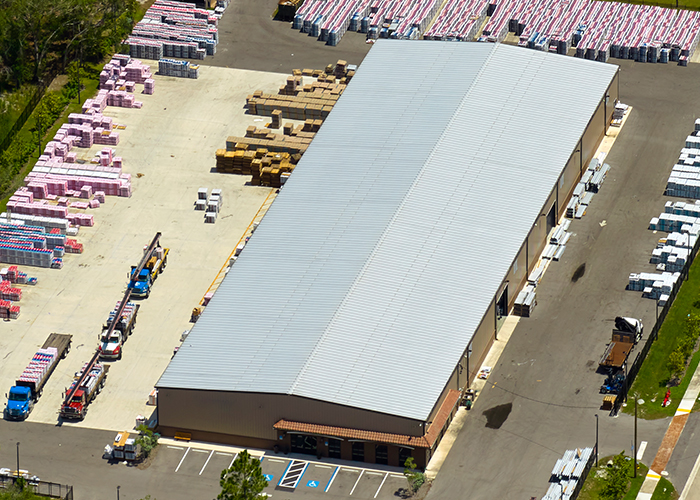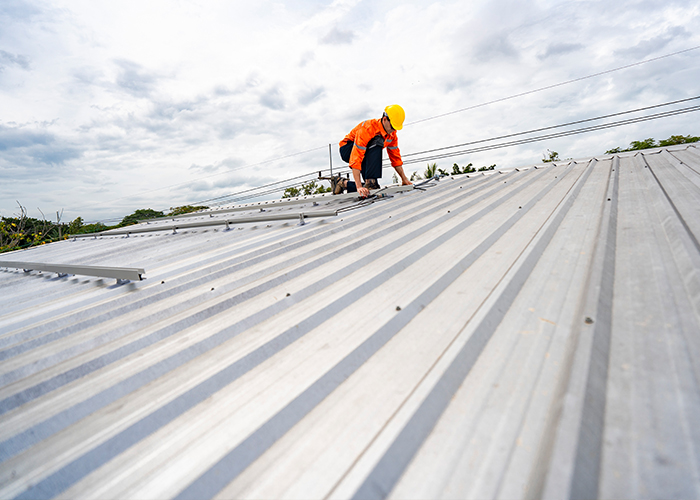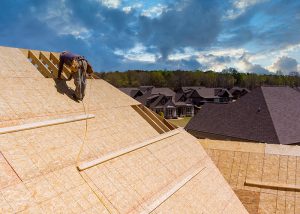How to Use ACV Policies for Your Houston Commercial Roof
By Shantell Moya · 3 months ago · 12 min read

You might raise an eyebrow. The ACV coverage usually comes with some lower premiums. But you can end up with a big gap between your payout and what you need for the repairs. Also, take the example of a local warehouse owner who only got $28,000 to help replace a roof that cost $95,000 after a rough storm last year. You protect your commercial property in Houston when you learn how depreciation is calculated, when you stay on top of inspections, and when you manage standard maintenance.
If you follow the right steps with your ACV policy, you can usually be well covered and stay away from the extra out-of-pocket costs that pop up during Houston’s wild storm seasons – heck, it could save you thousands.
It might sound like a cost-saving ACV strategy – at least until you file a claim and suddenly have to work with inspectors, adjusters, and a long depreciation list – and yes, your stomach will drop.
Let’s talk about it!
How ACV Roof Coverage Works
Believe it or not. The first step your insurance company usually takes when you file a claim for your commercial roof in Houston is sending out an inspector – this person will walk around your roof, take some photos, and jot down notes about what they see. Their main job is to record the damage. They don’t choose what you’ll get paid.
After that, though, an insurance adjuster comes in to review the photos and reports. The adjuster then figures out what your claim is worth. They check how much it would cost to repair your roof as if it just got installed yesterday. For this, they use software programs to crunch the numbers. What a process!
Here’s where business owners feel caught off guard. The adjuster puts together something called a depreciation table – this table tracks how much value your roof has lost over the years – time sure flies. So, an older roof is worth less than a new one, even if it worked well before the storm.
Lots of Houston business owners don’t know just how much depreciation takes out of that insurance payout. Tom, just to give you an example, operates a small strip mall on the west side of town. When he filed a hail damage claim, he assumed the insurance would pay for everything. Instead, his check only covered about half of what he needed for the repairs.
The age of your roof changes your payment amount. Commercial roofs usually last anywhere from 15 to 30 years in total. Insurance businesses use this as a guide to choose the depreciation. So, if your roof is about halfway through its lifespan, your payment could be only half of its replacement cost.
You should also look at your policy endorsements. These are extras that are attached to your policy that can change how your claim plays out. Some endorsements may leave out kinds of damage. But others can give you some stronger coverage for damages.
Houston’s weather is rough on roofs. The non-stop heat combined with the humidity and those sudden storms like to wear roofs down faster than you might think. So, your insurance company could use a higher depreciation rate for a Houston roof compared to one somewhere else. What a beatdown.
How to Calculate Depreciation Payouts
Here’s a twist – you can actually see how ACV policies play out with easy math! Picture your commercial building in Houston under a 10-year-old TPO roof. The insurance adjuster knows that these roofs last about 20 years in our local climate, so if your roof is at the halfway point, it might get a 50% depreciation rate.
Now, if it costs $100,000 to install a new TPO roof, you get a 50% depreciation, and your ACV payout lands at $50,000. You’d be responsible for coming up with the other $50,000 yourself. If you haven’t set aside those funds, this gap can catch you off guard.
You can think about a different example with a 3-year-old metal roof deck. The metal roofs in Houston like to last anywhere from 40 to 50 years. Your roof has burned through just about 6% of its expected life. In a case like this, the insurance company might use a 10% depreciation rate just to account for a bit of wear.
If it costs $150,000 to replace that metal roof, a 10% depreciation would bring your payout to $135,000. Mind blown. That’s a much smaller gap for you to close out of pocket. So, the age and the remaining lifespan of your roof shape how much help you can get from an ACV policy.
Remember that your deductible also gets taken out of the ACV amount – if you have a $10,000 deductible on your TPO roof, your insurance check actually drops to $40,000. That leaves you covering $60,000 of the total replacement cost.
Also, you should pull out your latest roof inspection report and take a close look. See if there are any notes about wear, damage, or maintenance problems. These kinds of problems can push the adjuster to use a higher depreciation rate. If your maintenance record isn’t good, you might see your payout shrink by another 5-10%.
Remember, though, that Houston’s weather can also play a part in depreciation decisions. Things like hail damage or signs of wind damage can give you some more depreciation, too. The insurance company might claim that these problems had already cut down your roof’s life before the latest claim came up. It makes you think.
How Deductibles Affect Budgets
Most of the commercial property policies in Houston use deductibles that are a percentage of your building’s coverage amount. You’ll usually see these set at 1% or 2% of the insured amount. For the bigger properties, it’ll mean a fairly large deductible.
Brace yourself! Here’s where it can get tough. Percentage deductibles work together with the depreciation in ACV policies – this double hit can be very tough when you file a claim. First, your insurance company subtracts some money based on how old your roof is, and then they’ll calculate your percentage deductible from the remaining amount. You end up with a check that’s quite a bit smaller than you had expected.
You’ve already thought about some ways to shrink your deductible. You can do this. You’ll pay more money for this, though. The insurance companies like to give you “deductible buydown” policies around the hurricane season. These add-ons can help cover some of your deductible if your property gets hit by a named storm.
One Houston warehouse owner found out about the percentage deductibles the hard way last year. He had assumed his “2% deductible” meant he’d be paying just 2% of his claim. But after the hail damaged his roof, he learned that the deductible was 2% of his building’s $5 million insurance coverage. That worked out to a $100,000 deductible, even before any depreciation.
You should run the numbers yourself before the storm season arrives. You can also take your building’s coverage amount and multiply it by your deductible percentage, which can give you a real headache. You might find that your possible out-of-pocket cost is higher than you thought. Business owners don’t know how expensive a claim can get until it happens.
Your deductible choice has a very clear effect on your budget if you have an ACV policy. A higher deductible usually means lower monthly premiums for you. But you’ll still pay more money upfront if your roof is damaged. You’ll need to cover this part before your insurance pays anything toward the repairs – ouch.
Inspection and Maintenance Strategies
Also, you should take care of your ACV policy by keeping up with the standard maintenance on your Houston commercial roof. The tough sun and heavy rain here can wear roof parts down over time. You should get some scheduled checkups so your roof stays in good condition, and your insurance company can’t say you let maintenance slide.
You should set up some professional roof inspections twice a year, though. That easy step can save you a surprise later! It’s a sound investment since trained roofers see small flaws early and help you stay away from repair bills later. They’ll look at cracks, loose flashing, and areas where water might get together. After strong storms, you should add an extra inspection for your security.
You should hold onto your paperwork and keep it organized. You can snap pictures of the roof before and after each repair job. You should save all records from repairs, cleanings, and checkups. If you end up needing to file a claim, this tough proof will back you up well.
You can try newer tech to monitor your roof. The drones work well to capture close-up shots of places that are hard to reach. Who knew you needed to see these angles? Thermal images show wet patches hiding beneath the surface. These tools help you build a clear record of your roof’s health.
You shouldn’t put off small repairs, hoping they’ll fix themselves. A little leak now can grow into a big problem during the next downpour. Insurance adjusters always look for signs that someone skipped standard maintenance, and they might lower your payout if they find any neglected places.
You can keep yourself organized with an easy calendar for roof care – it helps you see each job. You should schedule cleanings to clear debris and check drains. You should book inspections before hurricane season begins. With a set schedule in place, you’re less likely to miss any detail.
You should make sure that your maintenance schedule covers storm prep. That’s also the case in Houston’s unpredictable weather. You should trim back any trees that hang over the roof. You need to protect all rooftop equipment so it doesn’t blow away. Before storms hit, you should double-check that all gutters and drains are clear and ready. Storms always test the toughest plans.
Upgrade to Replacement Cost Options
Insurance businesses will actually let you switch from an ACV policy to a higher tier when it’s time to renew. You can also ask your agent to bump up coverage and stay away from starting over with a new policy. In some cases, your agent can add an endorsement that gives extra property protection. It’s usually the simplest way to improve your policy without changing everything else about it. Surprise twist – you might just not expect that!
If your latest insurer won’t agree to upgraded terms – you still have options. Try checking other Houston carriers since a few will usually give you extra flexibility for commercial roof coverage.
You have a strong chance to get your property re‑underwritten by the company after you install a new roof. Well, that’s a pleasant surprise. Your insurer will probably take a fresh look at your building and see that you’re taking steps to keep it safe. That can give you some better coverage options, and sometimes your premium rates drop.
Watch for cosmetic damage exclusions that may be hidden deep in your policy documents. These exclusions mean your insurer won’t cover any damage that can affect only your roof’s appearance. Lots of Houston business owners learn this only after a storm sweeps through. Then they find their policy doesn’t cover hail dents if there are no leaks!
One Houston shopping center owner decided to spend a bit more to get upgraded roof protection for their building last year. When a strong windstorm rolled in from the coast, their improved policy saved them nearly $300,000 in repair costs versus what they owed under the old ACV plan. The higher premium proved well worth it for their operation.
Review your policy facts before the next storm hits your property. Houston weather can be wildly unpredictable, and your roof faces dangers all year long. Talk to your agent about scenarios that worry you the most. Ask them to explain how your coverage applies in each situation. Be ready for anything.
A Secure Home Starts with a Solid Roof
Feels like a juggling act. The right fit for your commercial building’s insurance means weighing the monthly cost against how well you’re protected over time. In cities like Houston, storms usually happen year-round. You might pay less each month with an ACV policy. But you could end up spending more money from your own pocket if you need repairs after a storm. Also, think about your building’s age, your roof’s condition, and how much money you have set aside for emergencies. How much danger are you comfortable taking on if a big storm hits?
One of the best ways to protect your building, no matter which policy you choose, is to keep up with scheduled maintenance and inspections. When your roof stays in good shape, you’re less likely to deal with sudden leaks, and you’ll have more confidence when you talk to the insurance companies. You never know what lurks under those shingles. Take a moment to check when your roof was last inspected. People are caught off guard when they find out it’s been quite a bit longer than they realized since a professional took a look.
It goes a long way to know what your policy actually covers. Nobody wants to be stuck reading the insurance facts while the rain is dripping inside during a thunderstorm. Take some time now to check your coverage, make a note of your roof’s latest condition, and set a plan for future repairs. That way, you can sidestep stress once the extreme weather arrives. What can you do this week to get a bit clearer on what your policy covers and how protected you are?
At Roof Republic, we work with commercial roofs. We’re based right here in Texas, mainly serving the Greater Houston Area. Give yourself a break from worry by allowing our experts to manage the inspections, repairs, or replacements.
Reach out for a free inspection, and let’s make sure that your roof gets the attention it needs. When the questions come up, or you run into some storm damage, it always makes sense to call a trusted roofing team like Roof Republic. We’re here with the advice you can count on and great repair and installation when you need it most. Contact us to get started!










Comments
Sort by: